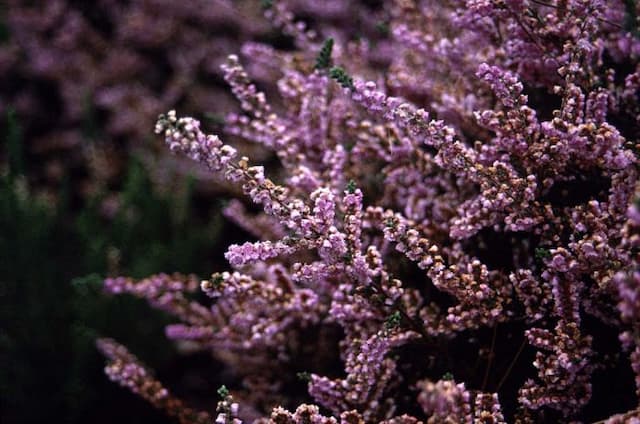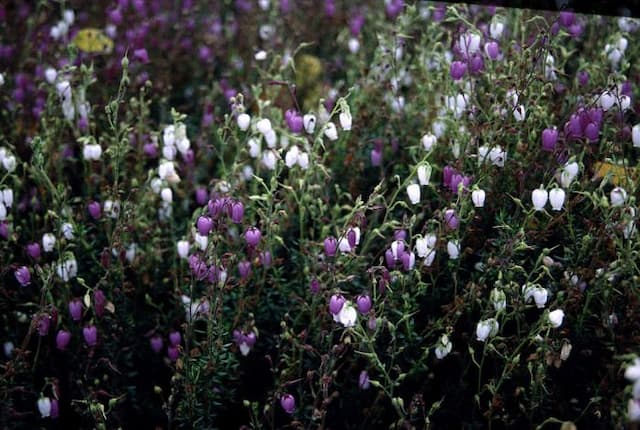Hybrid Strawberry Tree Arbutus × andrachnoides

ABOUT
Arbutus × andrachnoides, commonly known as the Strawberry Tree, is a visually striking plant with a unique and attractive appearance. It combines features from its parent species, resulting in characteristics that make it stand out in gardens and landscapes. The bark of the tree is smooth and has a beautifully exfoliating quality, peeling away in patches to reveal a mosaic of colors ranging from warm cinnamon to rich reddish-brown shades, creating a striking and picturesque effect on the trunk and branches. The leaves of the Strawberry Tree are evergreen, adding to its year-round appeal. They are leathery and glossy, with a deep green color that contrasts nicely against the bark. The edges of the leaves are typically serrated, providing a bit of textural interest. Blooming predominantly in the fall to winter, the Strawberry Tree produces bell-shaped flowers that dangle in clusters. The flowers are typically white or pale pink, adding a soft yet noticeable flush of color to the plant during the cooler months when many other plants have ceased flowering. Following the flowering period, the Strawberry Tree bears fruit that greatly resembles small strawberries, hence the common name. These fruits are round to oval, initially starting out as yellow and gradually transitioning to a bright red hue once fully ripe. The fruits not only add an additional layer of decorative interest but also attract a variety of birds and wildlife to the garden. Overall, Arbutus × andrachnoides presents a harmonious blend of ornamental bark, lush foliage, delicate flowers, and showy fruit, making it a multifaceted and valuable addition to any landscape where its appearance can be appreciated throughout the seasons.
About this plant
 Names
NamesFamily
Ericaceae.
Synonyms
Hybrid Strawberry Tree, Grecian Strawberry Tree, Andrachne.
Common names
Arbutus × andrachnoides.
 Toxicity
ToxicityTo humans
Arbutus × andrachnoides, commonly known as the hybrid strawberry tree, is not typically regarded as a toxic plant to humans. There are no well-documented cases of toxicity from consuming the fruits or any other parts of this plant. As with any non-cultivated fruit or plant material, sensitive individuals might experience mild stomach upset if the plant is not commonly part of their diet or if it is consumed in large amounts. It is, however, always advisable to exercise caution and consult with a medical professional or a knowledgeable botanist when in doubt about the edibility of wild plants.
To pets
The hybrid strawberry tree, or Arbutus × andrachnoides, is not commonly known to be toxic to pets. There is limited information available on the effects of this plant on animals, but in general, it is not considered a threat. However, pets may react differently to plants than humans, and individual animals might have sensitivities or allergic reactions. If a pet consumes a significant amount of this plant and shows any signs of distress such as vomiting, diarrhea, or other changes in behavior, it is essential to contact a veterinarian. As a precautionary measure, it is advisable to prevent pets from ingesting any part of plants that are not confirmed to be safe for them.
 Characteristics
CharacteristicsLife cycle
Perennials
Foliage type
Evergreen
Color of leaves
Dark green
Flower color
White
Height
8-12 feet (2.4-3.7 meters)
Spread
6-10 feet (1.8-3 meters)
Plant type
Tree
Hardiness zones
7
Native area
Mediterranean
Benefits
 General Benefits
General Benefits- Aesthetic Appeal: Arbutus × andrachnoides, commonly known as the Grecian Strawberry Tree, adds visual interest to gardens with its peeling reddish-brown bark, lush green foliage, and bell-shaped white or pink flowers.
- Wildlife Habitat: The tree provides shelter and habitat for various species of birds and insects.
- Edible Fruit: It produces strawberry-like fruits that are edible, though they are not widely consumed by humans.
- Drought Tolerance: Once established, the Grecian Strawberry Tree is drought-resistant, making it suitable for xeriscaping and Mediterranean gardens.
- Low Maintenance: This plant requires minimal pruning and care once it is established, making it an ideal choice for gardeners looking for low-maintenance landscaping options.
- Year-Round Interest: The Grecian Strawberry Tree offers year-round interest due to its evergreen nature, flowers, and fruit, ensuring that gardens have continuous color and texture.
- Erosion Control: The root system of Arbutus × andrachnoides helps stabilize the soil and prevent erosion, particularly on slopes or in areas prone to soil degradation.
 Medical Properties
Medical PropertiesThis plant is not used for medical purposes.
 Air-purifying Qualities
Air-purifying QualitiesThis plant is not specifically known for air purifying qualities.
 Other Uses
Other Uses- Woodworking: Arbutus wood is hard and dense, making it suitable for fine woodworking projects such as turning, carving, and inlay work.
- Landscape ornament: With its striking peeling bark and attractive flowers, the plant is used for ornamental purposes in gardens and parks.
- Food for wildlife: The fruit of the Arbutus can serve as a food source for birds and other wildlife.
- Cultural symbolism: In some cultures, Arbutus trees may represent beauty and survival, often planted to convey these messages in a landscape.
- Photography subject: The distinct appearance of the Arbutus makes it a captivating subject for nature photographers.
- Shade tree: Arbutus trees, due to their size and leaf canopy, can provide shade in garden settings and urban landscapes.
- Bonsai: Some enthusiasts use Arbutus for bonsai due to its interesting bark and growth habit.
- Instrument crafting: Occasionally, the wood of Arbutus may be used in the crafting of musical instruments for its acoustic properties.
- Educational tool: Arbutus trees can be used to teach botany and ecology, highlighting plant adaptation and Mediterranean ecosystems.
- Habitat restoration: Arbutus trees, being native to certain regions, can be used in reforestation and habitat restoration projects.
Interesting Facts
 Feng Shui
Feng ShuiThe Arbutus × andrachnoides, commonly referred to as the Strawberry Tree, is not used in Feng Shui practice.
 Zodiac Sign Compitability
Zodiac Sign CompitabilityThe Strawberry Tree is not used in astrology practice.
 Plant Symbolism
Plant Symbolism- Resilience: The Arbutus × andrachnoides, commonly known as the Strawberry Tree, is an evergreen plant that is quite hardy and can survive in a range of conditions. This resilience is often seen as a symbol of enduring through challenges and standing strong despite adversity.
- Beauty: With its attractive red peeling bark and small bell-shaped flowers, the Strawberry Tree is often associated with beauty. Its unique appearance symbolizes the appreciation of beauty in all forms, whether unconventional or traditional.
- Renewal and Rebirth: The tree has the ability to regenerate its bark, symbolizing renewal and the ability to bounce back from damage or loss, akin to a rebirth or fresh start.
- Protection: In some cultures, the Strawberry Tree is seen as a protective entity, its evergreen nature providing year-round shelter and its wood used historically for crafting protective items.
- Bounty and Abundance: The fruit of the Strawberry Tree is edible and can be abundant, symbolizing generosity, fertility, and the gifts of the earth.
- Balance: The plant's ability to offer both aesthetic beauty and practical uses, such as its fruit and durable wood, is often seen as a symbol of balance and harmony between beauty and utility.
 Water
WaterThe Strawberry Tree should be watered regularly, with a deep watering method to ensure that the root zone is thoroughly saturated. Newly planted trees require more frequent watering, about once a week, especially during dry spells. For established trees, watering every two to three weeks is sufficient. Approximately 1-2 gallons should be provided per watering session to maintain consistent soil moisture without causing waterlogging. It is crucial to adjust watering frequency based on rainfall and temperature changes to meet the plant's needs without over-watering.
 Light
LightThe Strawberry Tree thrives best in full sun to partial shade. Ideally, it should be planted in a location where it can receive at least six hours of direct sunlight each day. However, in particularly hot regions, some afternoon shade can benefit the plant to prevent excessive heat stress.
 Temperature
TemperatureThe Strawberry Tree prefers a temperate climate and can tolerate a range of temperatures. It can withstand temperatures as low as 20°F and as high as 90°F, but the ideal temperature range for optimal growth is between 50°F and 80°F. Protection from extremely low temperatures and harsh frost is advisable to keep the tree healthy.
 Pruning
PruningPruning the Strawberry Tree is essential to maintain its shape, remove any dead or diseased branches, and encourage a strong structure. The best time for pruning is in late winter or early spring before new growth starts. Prune lightly every year or more thoroughly every few years as needed to keep the tree's desired form.
 Cleaning
CleaningAs needed
 Soil
SoilThe Hybrid Strawberry Tree (Arbutus × andrachnoides) prefers a well-draining soil mix with a significant amount of organic matter, such as peat or compost, to retain moisture while still providing good drainage. A mixture of one part peat, one part pine bark, and one part coarse sand or perlite can be ideal. The soil pH should be slightly acidic to neutral, ranging from 5.5 to 7.5.
 Repotting
RepottingThe Hybrid Strawberry Tree does not need to be repotted frequently. It can be repotted once every 2 to 3 years, or when it outgrows its current container. Care should be taken not to disturb the roots excessively during repotting.
 Humidity & Misting
Humidity & MistingThe Hybrid Strawberry Tree thrives in moderate to high humidity levels. While it can tolerate some dry air, maintaining a humidity level around 50% is beneficial for its growth.
 Suitable locations
Suitable locationsIndoor
Provide bright light and moderate humidity for the Hybrid Strawberry Tree.
Outdoor
Ensure full sun to partial shade and protect from harsh winds for the Hybrid Strawberry Tree.
Hardiness zone
7-10 USDA
 Life cycle
Life cycleArbutus × andrachnoides, commonly known as the Strawberry Tree, begins its life cycle with seed germination, which occurs in a warm, moist soil environment, taking several weeks to months due to seed dormancy. After germination, the plant enters the seedling stage, with the development of primary leaves and a root system that allows the plant to start photosynthesis. The growth stage follows, where the plant establishes itself, developing a woody stem, a robust root system, and characteristic glossy green leaves, with the process taking several years to reach maturity. Once mature, the Strawberry Tree produces small, bell-shaped, hermaphroditic, white or pale pink flowers, usually in the late fall, which are pollinated by bees. Following pollination, the plant develops bright red, berry-like fruits, which contain numerous seeds and mature over roughly 12 months, attracting birds and other wildlife that aid in seed dispersal. The tree can live for many decades, with the cycle of flowering and fruiting occurring annually once maturity is reached.
 Propogation
PropogationPropogation time
Spring to summer
The Strawberry Tree, or Arbutus × andrachnoides, can be effectively propagated through semi-hardwood cuttings. This method is commonly employed during the late summer months, often around July to August. To take a semi-hardwood cutting, one would select a healthy, current year's growth that has begun to mature but is not yet fully hard. It's typically recommended to cut a length of 4 to 6 inches (approximately 10 to 15 centimeters), ensuring that several leaves are present. The cut end of the cutting may be dipped in rooting hormone to increase the chances of successful root development. Then, the cutting is placed in a well-draining rooting medium such as a mix of perlite and peat, and kept under humid conditions with a plastic cover to retain moisture. Roots usually develop within a few weeks, after which the cutting can be gradually acclimatized to normal environmental conditions.









